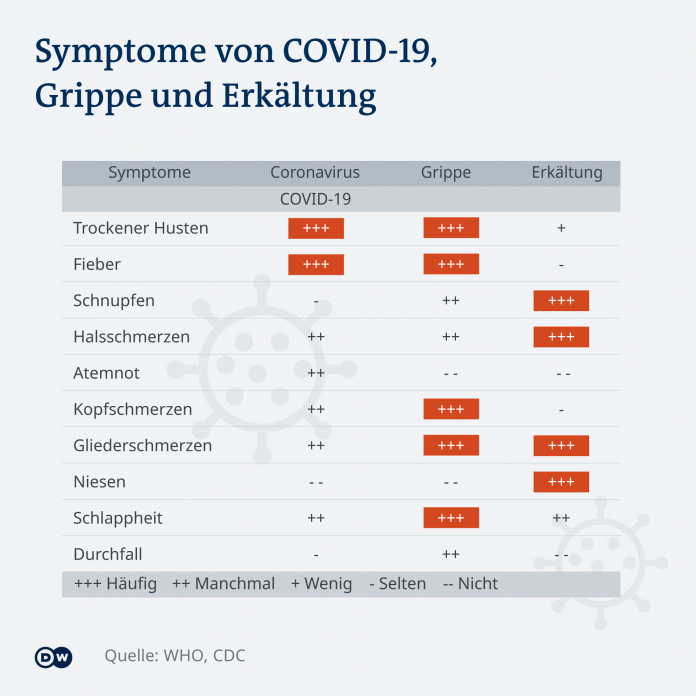A body temperature of 36.5 to 37 degrees Celsius is ideal for us humans. Then we work best. Our metabolism and all of our organs depend on this core temperature, and our body does everything it can to maintain it.
Our body uses receptors to measure whether it is at the right temperature. A degree or two doesn’t matter much. However, if the temperature drops sharply, the body tries to activate the metabolism in order to maintain the balance.
The body’s own thermostat
Our metabolism provides us with the necessary nutrients. It ensures that food is broken down and transformed so that the cells can utilize the nutrients. In addition, the metabolism warms the body. When it’s cold, it needs more energy. When it’s cold, the blood vessels constrict so that not too much heat is lost.
So we need more energy for good blood circulation. Trembling is also a kind of protective mechanism. When we shiver and shiver when it’s really cold, our body is trying to produce heat and prevent it from getting cold.
Viruses are responsible for the common cold
However, freezing and cold alone do not make us ill. A cold is usually caused by a virus.
are the main causes of a cold rhinoviruses. They exist worldwide and they lead to upper respiratory tract infections. We spread the virus primarily through our hands, but we can also become infected through the air. Unlike the flu that’s going through influenza viruses is triggered, there is no vaccination against a cold – we simply have to go through with it.
Cold and flu are not the same
Colds usually come in winter
Despite all this, colds in the northern hemisphere are related to the cold season. There are reasons for this, too: when it is cold, i.e. in winter, pathogens have a particularly easy time, because cold air is dry and such an environment is ideal for the common cold virus. But not only the outside air is then dry, indoor humidity is often too low, our mucous membranes dry out. Without this protective layer of mucus, viruses can enter our bodies very quickly.
Air conditioners, for example, also ensure that our mucous membranes dry out because they remove moisture from the air. The air that is discharged from an air conditioner is drier than that that was previously drawn in.
In addition, many parts of our body are less well supplied with blood when it is cold. This includes our nose. During the cold season, our immune cells are not fit enough to declare war on the intruders and to successfully block them. When it’s cold, our immune system is particularly challenged.
Viruses like low temperatures
If the temperatures drop below 19 degrees, the risk of infections and colds increases. There is an increased risk of infection, especially in older people, people with low blood pressure and those who move little. Basically go according to the World Health Organization (WHO) lower room temperatures in people with asthma, for example, are associated with a higher susceptibility to a cold and thus to other respiratory diseases.
Especially in closed rooms, the pathogens float in the air and can easily accumulate there. Outside, on the other hand, they are carried away by the air. There is only a risk of infection in the fresh air if you talk to someone who is standing opposite you and you pick up their virus from the air you breathe.
Women freeze faster than men
In fact, women are more likely to freeze than men. This is mainly for biological reasons. Men usually have much more muscle mass and this offers a certain protection against the cold. Muscle cells generate heat as they use calories. Men have thicker skin than women, so the female body cools down faster.
Children generally don’t get cold that easily. On the one hand, this is simply because they usually move more than older people. The muscular activity can warm up their small body faster than that of an adult, and after all, they are often intensely engaged in games, so they don’t even feel the cold.
Why don’t the Inuit freeze?
People who live in cold regions, such as the Inuit, do not get cold as easily as, for example, Europeans. This is partly due to genetics. The residents have adapted to the extreme temperatures in their homeland. A series of gene mutations are responsible for this. These also ensure a changed metabolism. As a result, the Inuit on Greenland, for example, can efficiently convert body fat into heat and make good use of their fish-rich diet. In 2015, researchers led by Matteo Fumagalli from Imperial College London had one Study on this in the journal Science released.
prevent colds
Unfortunately, most people do not have this special adaptation. Nevertheless, we are not completely at the mercy of colds: Last but not least, COVID-19 has shown how important hygiene measures – such as regular hand washing – are. The room climate can also be decisive for the risk of infection: Dry heating air ensures dry mucous membranes, which is good for the viruses, because then they can get into our bodies more easily. Regular airing can counteract this.


















